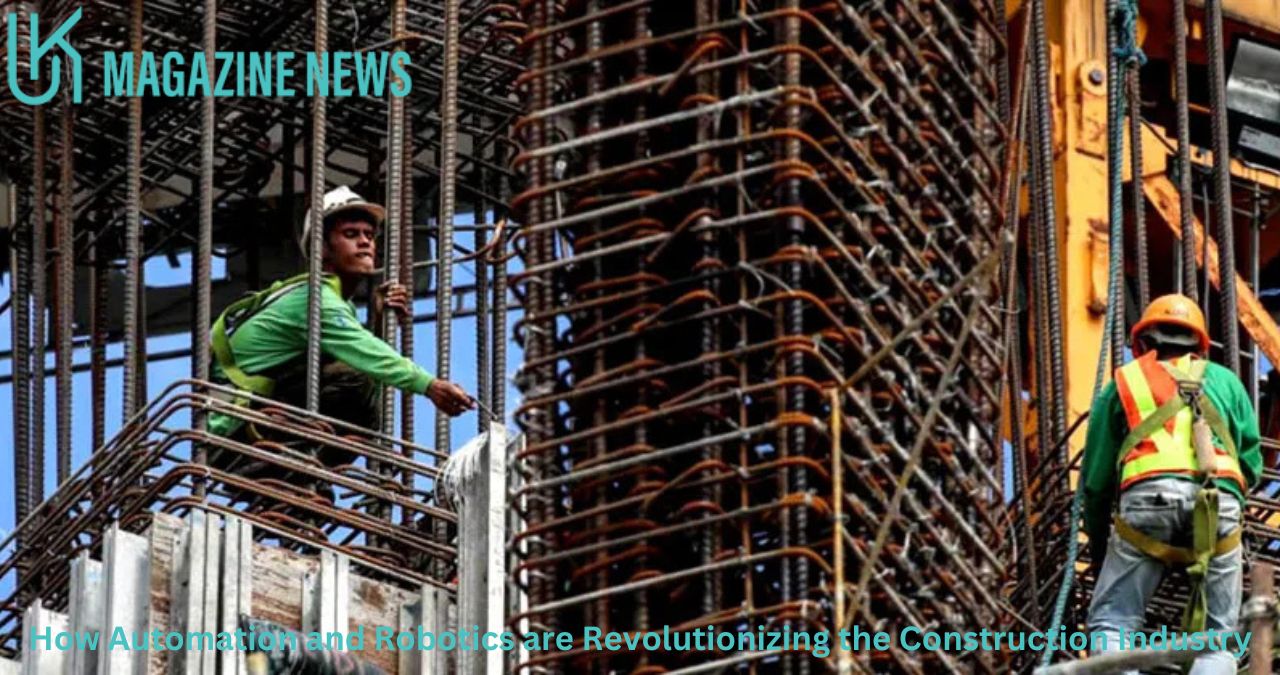The construction industry, traditionally known for its labor-intensive processes, is undergoing a transformation driven by automation and robotics. From laying bricks to assembling steel frameworks, robots and automated machinery are increasingly taking over tasks that were once solely manual. This shift is not just about speeding up processes; it’s also about improving safety, accuracy, and efficiency across construction projects. With these advancements, the need for precise project planning becomes even more critical, making services like construction estimating services invaluable for accurate budgeting and resource allocation in this tech-driven landscape.
Robotics in Construction: A Game-Changer for Productivity
Robots are entering construction sites with capabilities ranging from bricklaying to welding, and they’re redefining productivity standards. One such innovation is the use of bricklaying robots, like the Semi-Automated Mason (SAM), which can lay thousands of bricks per day, far outpacing human capabilities. Robots like SAM are highly precise, ensuring consistent quality, and they relieve workers from physically taxing tasks, reducing fatigue and injury risks.
Beyond bricklaying, robotics is playing a critical role in steel fabrication and concrete work, with robotic arms and 3D printing technology creating entire building components. For instance, 3D printing robots can produce concrete walls and entire building sections layer by layer, which can then be assembled on-site. This reduces material waste, as only the necessary amount of material is used, and construction timelines are shortened significantly.
Automation in Project Management and Planning
Automation doesn’t stop at physical labor—it’s also making an impact on project management and planning. Building Information Modeling (BIM) software, combined with AI-driven tools, is transforming the way construction projects are designed and executed. BIM allows for real-time project updates and provides a detailed, digital representation of the building, which helps teams visualize each step before it occurs on-site.
Automation in project management can optimize scheduling, enhance communication, and reduce the likelihood of costly errors. AI can analyze large data sets from past projects to predict timelines and budgets more accurately. It also improves coordination between different teams on a project, ensuring everyone is aligned and potential issues are identified early. Automation tools are also helping with risk management, as they can analyze potential safety hazards, allowing companies to take preventive measures.
Enhancing Safety Through Robotics and Drones
Construction is known for its high-risk environment, but robotics and automation are creating safer working conditions. For example, drones are being used to monitor job sites from the air, providing real-time visual data without needing humans to be in dangerous positions. These drones can scan and map the entire site, identifying hazards, checking for compliance with safety regulations, and monitoring worker locations to prevent accidents.
In addition, autonomous vehicles and machinery, like excavators and bulldozers, are reducing the need for operators to be physically present in risky areas. These machines can be remotely operated or programmed to follow specific paths, lowering the chance of human error and enhancing safety on the ground. Wearable technology, like smart helmets and vests with sensors, also alerts workers to potential hazards and improves on-site communication, further contributing to a safer work environment.
Increased Precision with Construction Robotics
Precision is crucial in construction, as even small measurement errors can lead to costly issues down the line. Robots are especially valuable in performing repetitive tasks that require exacting precision, such as installing prefabricated materials or painting large areas. By eliminating human error, these robots ensure higher quality and consistency across projects.
For example, robotic arms equipped with laser sensors can perform millimeter-precise installations, minimizing the need for rework. Drones equipped with 3D mapping capabilities also provide highly accurate surveys, which are then used for initial planning and ongoing adjustments during construction. Such innovations not only enhance quality but also reduce waste and project delays.
Implications for the Workforce and Future Developments
The integration of robotics and automation has sparked discussions about the future of the construction workforce. While some fear that machines could replace human workers, the reality is that these technologies are creating new roles and opportunities for skilled labor. For instance, robots require operators, programmers, and maintenance technicians. As construction companies increasingly adopt automation, they are investing in training programs to upskill their workforce, equipping them with the technical skills needed to work alongside robots and automated systems.
As automation continues to shape the industry, professionals in roles like project management and cost estimation must adapt their methodologies. Construction takeoff services, for instance, now factor in the use of robotics and automation when determining quantities and costs for materials. Automation-driven changes influence everything from initial planning to final execution, making accurate takeoff and cost estimation services essential to successful project outcomes.
A New Era in Construction
Robotics and automation are ushering in a new era for the construction industry, one marked by increased efficiency, improved safety, and greater precision. From autonomous machinery to AI-driven project management tools, these innovations are helping companies streamline their processes, reduce costs, and meet tight project timelines without compromising quality. As this technology continues to evolve, it will redefine industry standards, pushing construction toward an even more sustainable and productive future.
In this rapidly changing landscape, the combination of human expertise and robotic precision has the potential to reshape the built environment. While challenges remain, particularly in upskilling the workforce and integrating these advanced technologies on traditional sites, the benefits of automation and robotics in construction are undeniable. Embracing these advancements will allow the construction industry to meet modern demands with resilience and innovation, ensuring a brighter and safer future for workers and communities alike.





